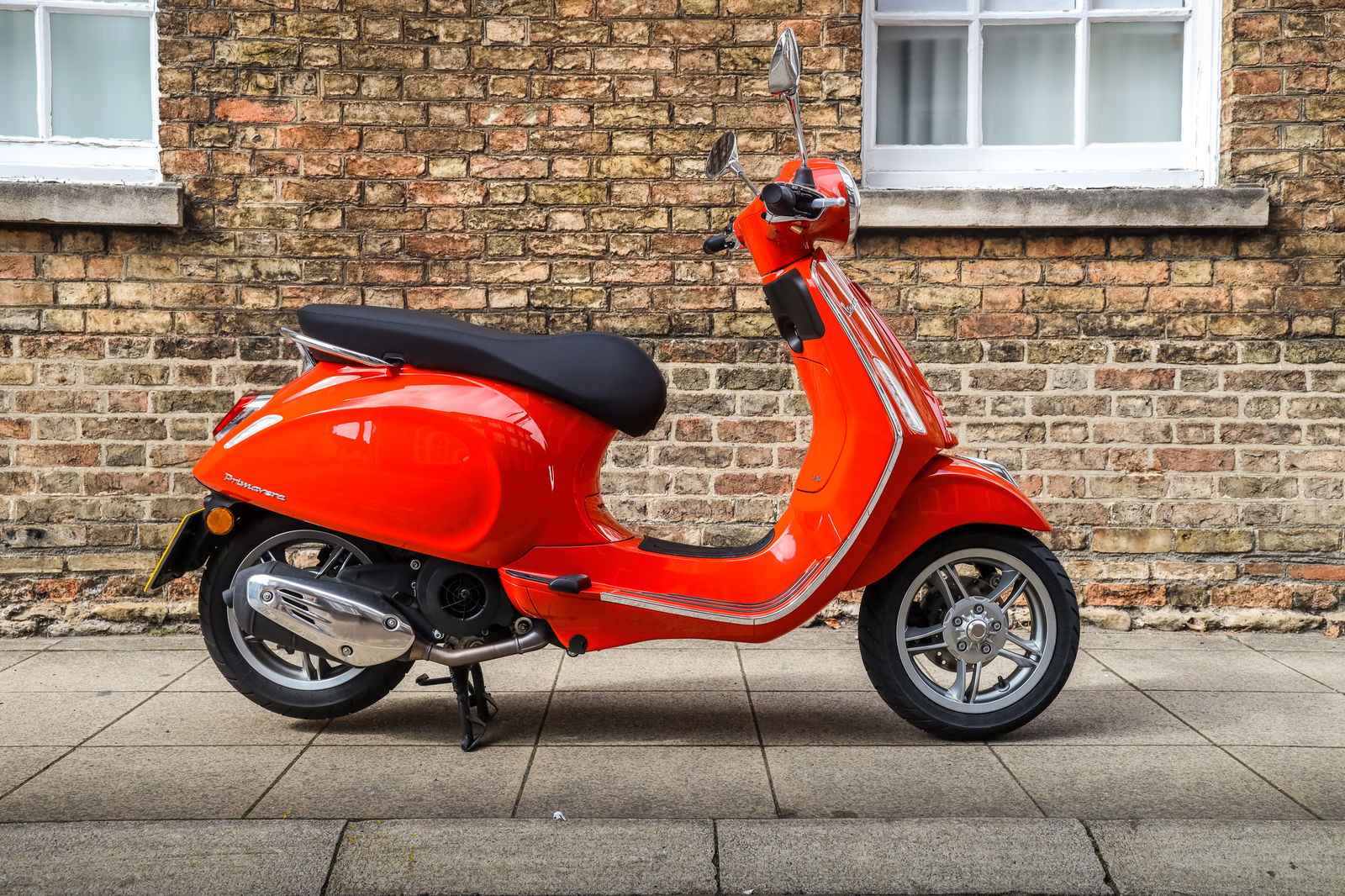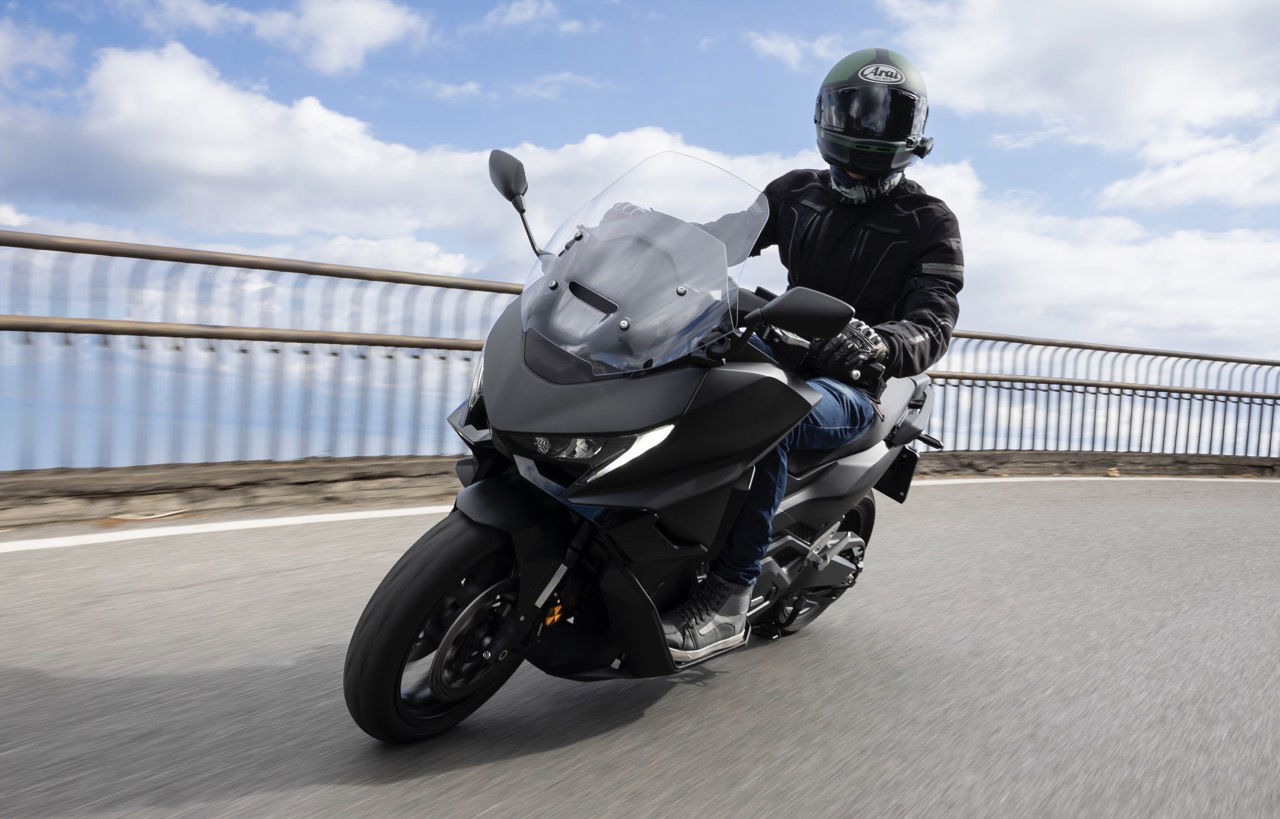MV Agusta Superveloce Review: Just A Pretty Face?
The Superveloce might just be the most attractive motorcycle you can buy new, but does it offer much more than good looks?

‘Really, really, ridiculously good-looking’ is how I’d describe the MV Agusta Superveloce, if you’ll forgive me for quoting a film which is now, scarily, the best part of 25 years old. It’s quite possibly the prettiest motorcycle currently on sale, marrying old-school, 60s MV racer-inspired looks in a modern setting without descending into cheesy territory.
As with Derek Zoolander, though, you might wonder if the Superveloce has anything more to offer than being really, really, ridiculously good-looking. After all, it’s based on the F3, a bike that’s now over 10 years old, and MV Agusta expects you to hand over quite a lot of money for the privilege of throwing a leg over a bike made from fairly old componentry.
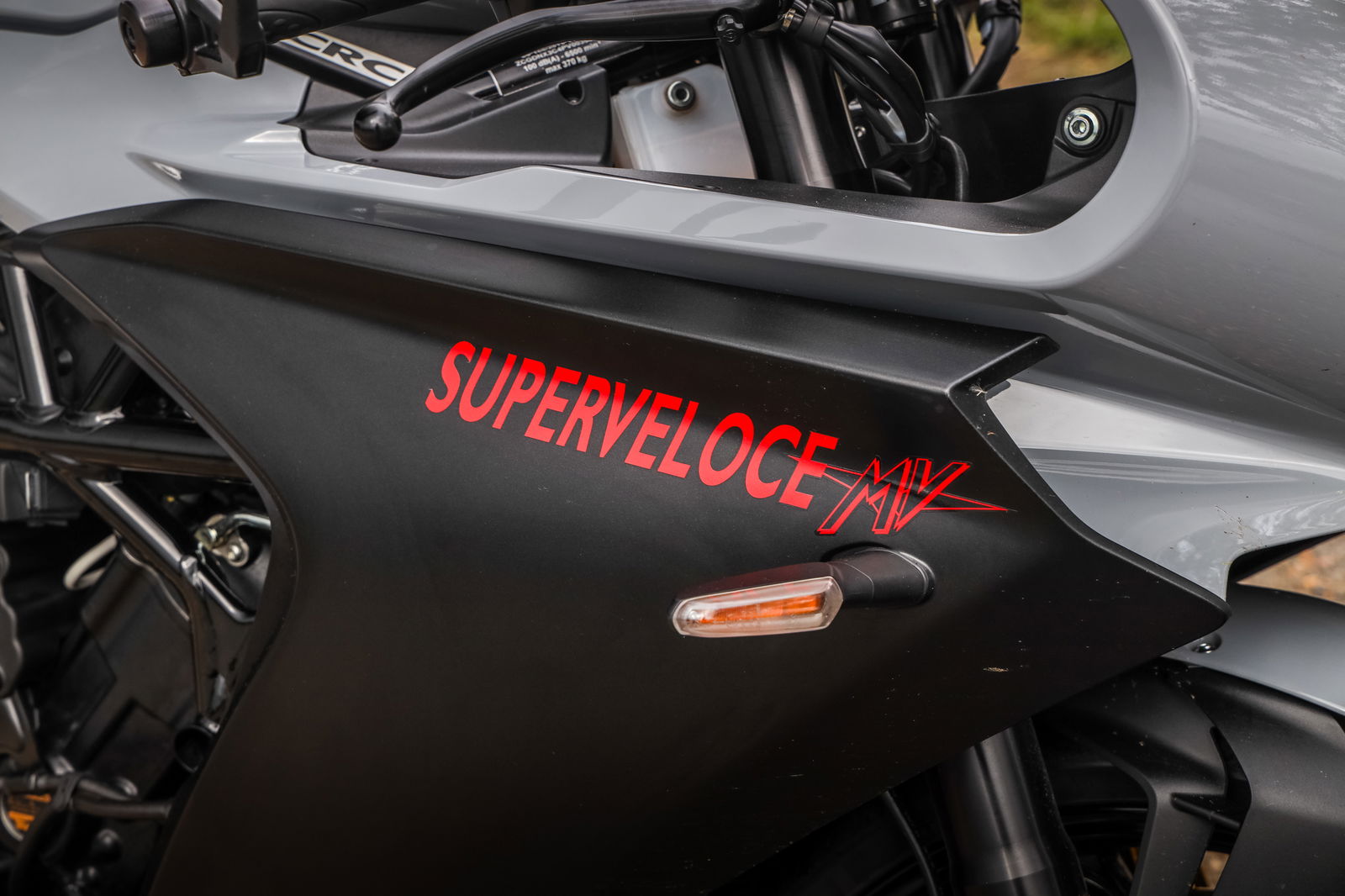
To find out if the Superveloce is more than just a (very) pretty face, I spent a week and a half with an entry-level version, clocking several hundred miles of road riding on country roads, urban areas and motorways.
MV Agusta Superveloce price and availability
Here’s where things get a little eyebrow-raising, as even the entry-level Superveloce is £19,900. That being said, until the end of 2024 it’s possible to get one for a more palatable £17,400, and there’s a tempting finance package available featuring 36 monthly payments of just £69. You will, though, need to stump up just over £5,000 for the deposit and also save up £11,685 for the optional final payment if you want to keep the bike at the end of the term. The APR on the deal is very reasonable at 4.9 per cent.
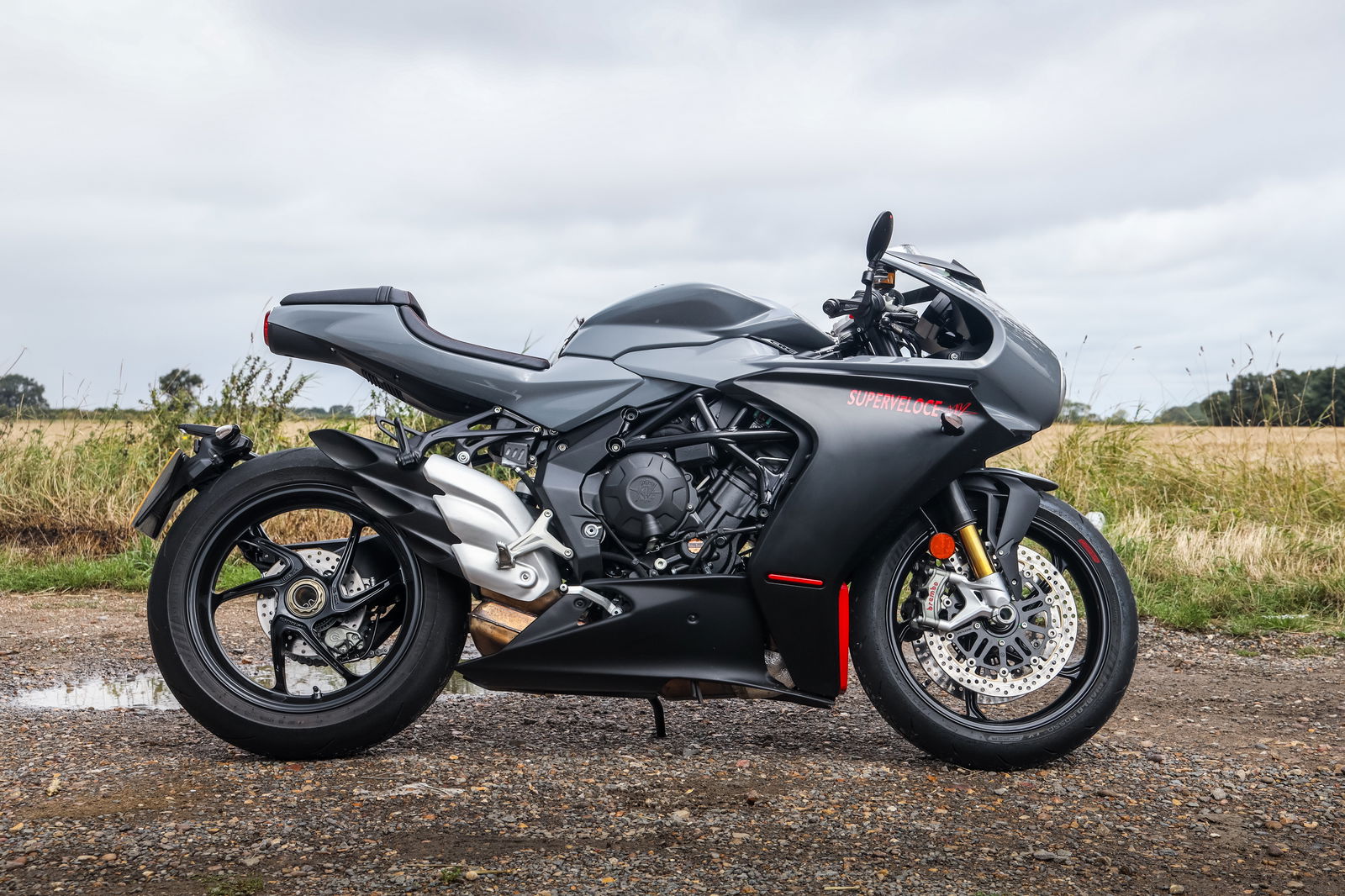
The base Superveloce is available in two colourways - a grey/matte black/red combination (as tested, or Grigio Nardo/Nero Carbon Metallizzato Opaco/Rosso Ago as MV lengthily calls it) or red/silver (Rosso Ago/Argento Ago) for a more traditional MV look.
The S normally has a starting price of £24,000, but again, there’s a deal on it currently. This drops the up-front price to £21,500. There's a 4.9 per cent APR offering here also, involving a deposit just shy of £6,000, monthly payments of £129 and an optional final payment of £13,038.75.
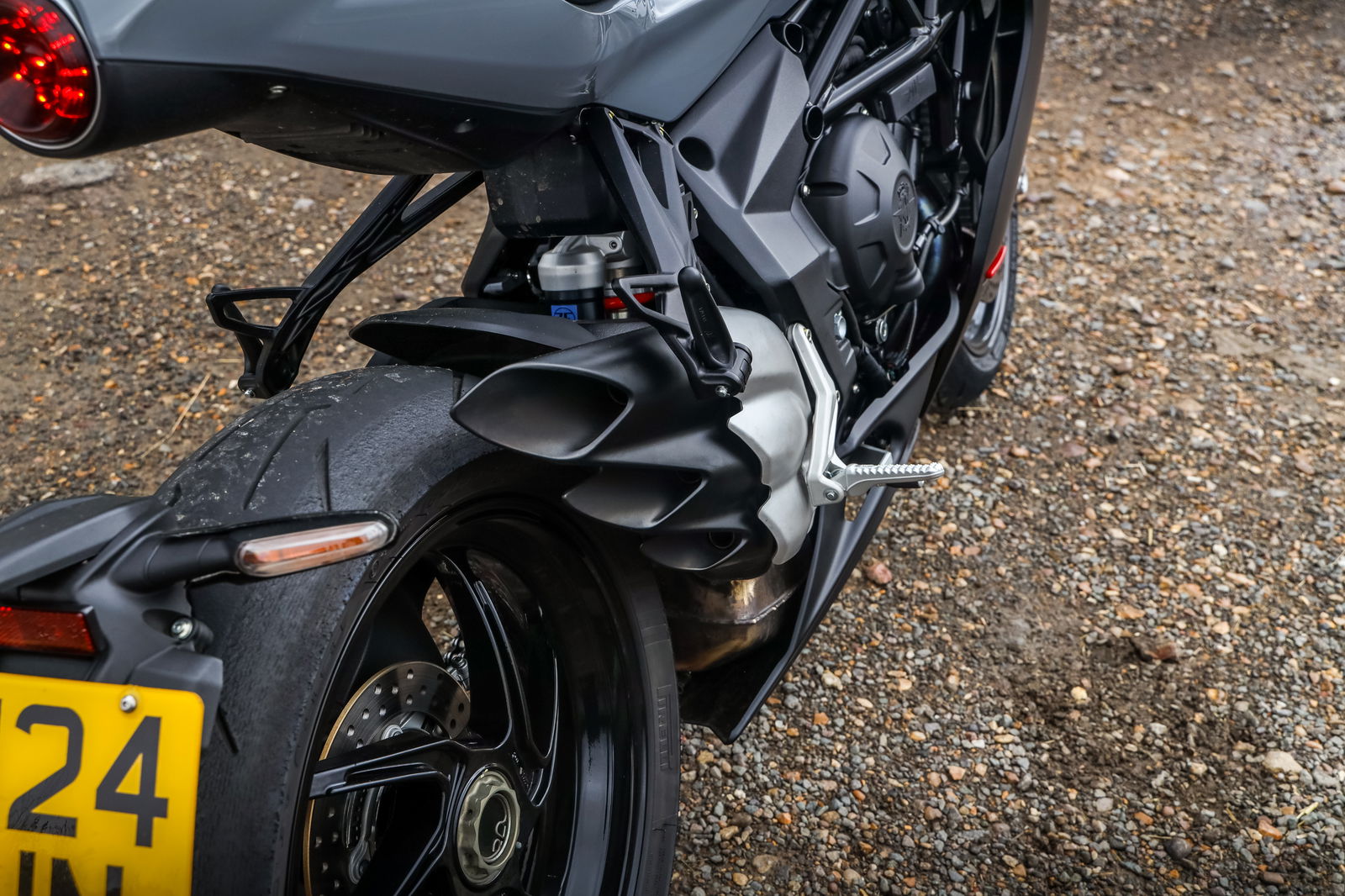
There are two colourways offered - a gorgeous silver and gold combination (Argento Iridium/Oro Opaco) or black and gold (Nero Carbon Metalizzato/Oro Opaco). You can combine either with an optional race kit which includes a carbon fibre seat cover and a three-into-one Arrow exhaust.
Engine, chassis and technology
As mentioned, the MV Agusta F3 is the starting point for the Superveloce. It’s built around a steel trellis frame which houses a 798cc three-cylinder engine, which is much the same as the F3 675-replacing unit MV brought out way back in 2013 and revised in 2021 for Euro5 emissions rules.
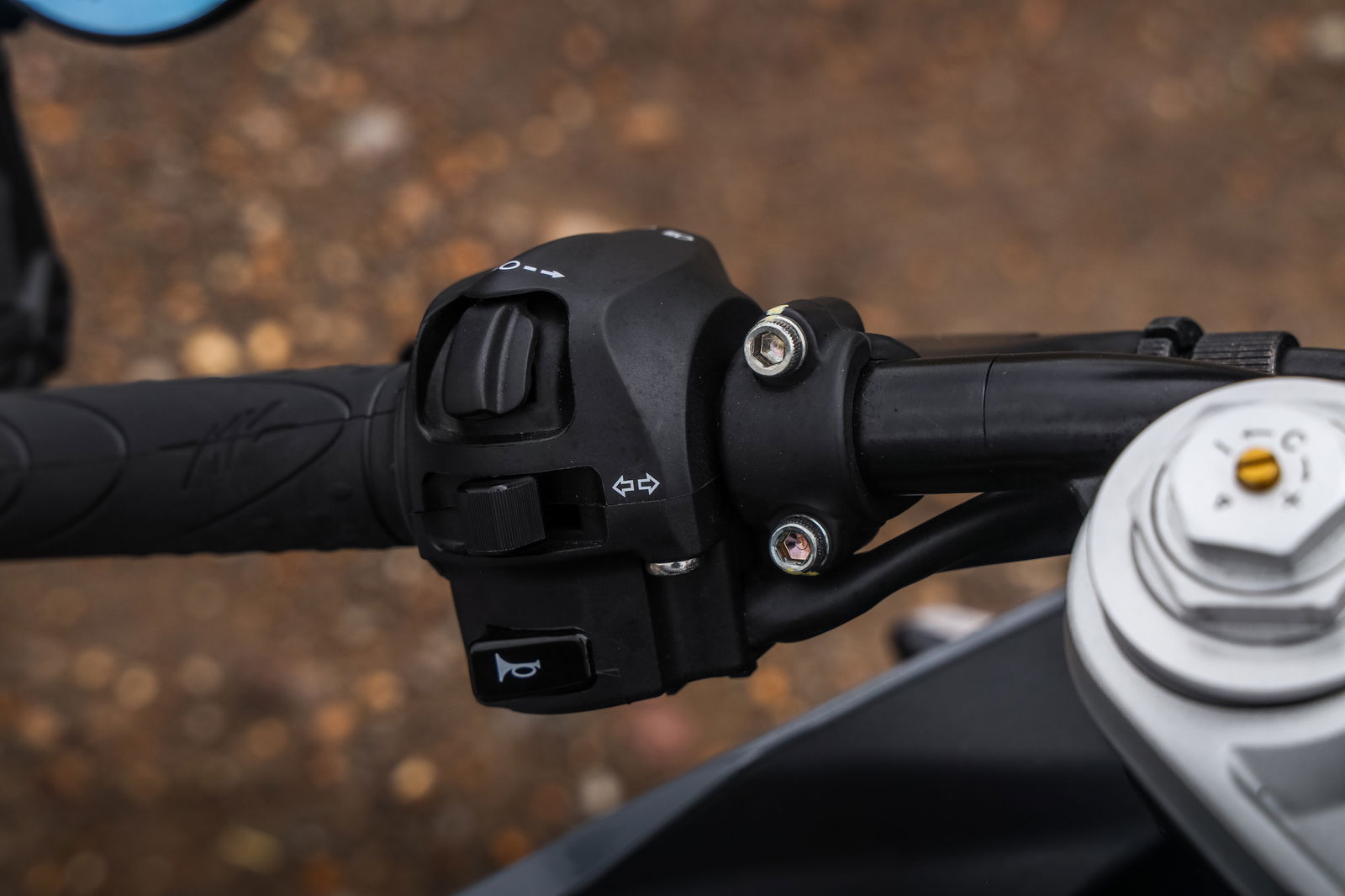
It’s an unusual engine, featuring a counter-rating crankshaft. This MotoGP-inspired tech is, despite what you might expect, all about improving handling rather than engine performance. By spinning the crank backwards, something called ‘gyroscopic resistance’ is reduced, making the bike tip in more easily, and there’s the bonus of an anti-wheelie effect. The engine makes 148bhp at 13,000rpm, and 65lb ft of torque at 10,600rpm, which puts it somewhere between supersports and superbike territory.
The chassis is also carried straight over from the F3, comprising a fully adjustable upside-down fork from Marzochi, and a fully adjustable monoshock from Sachs at the rear. Slowing things down are twin 320mm discs squeezed by Brembo four-pot callipers, with a two-piston calliper working on a 220mm disc at the rear.

It’s in terms of tech that the Superveloce starts to look quite dated. There’s no inertial measurement unit (IMU), so that means you don’t get lean-sensitive rider aids. There’s a nine-stage traction control system, though, and anti-wheelie control, although it only has two modes - on or off.
What’s it like to ride?
Jumping straight onto the Superveloce from an adventure bike, it felt like I was leaning forward forever before finding the handlebars. This is a classic supersport riding position, albeit with some tweaks relative to the F3 to bring the bars and pegs slightly higher.
Even so, these are focused ergonomics which will start to hurt your wrists and back if you’re riding it for much more than an hour. It didn’t feel unduly cramped for me, though, despite being a little on the taller side at just over six feet.

In any case, all of this comes with the territory and is very much forgivable. What’s less forgivable is the feeling of cheapness of some elements of the cockpit. It’s a curious mix, with elements like the beautifully sculpted tank with its leather strap (a purely cosmetic item designed to evoke quick-release tanks which were actually held on with straps back in the day) sitting alongside some basic-looking switch cubes and crude screw-type suspension adjusters.
Thumbing the starter button, things start to make a bit more sense. Doing so awakens an engine that’s very different in character to the triples used by Triumph and Yamaha. Along with being more powerful than the smaller inline-threes from both brands, it’s also burlier. Angrier. More raw.
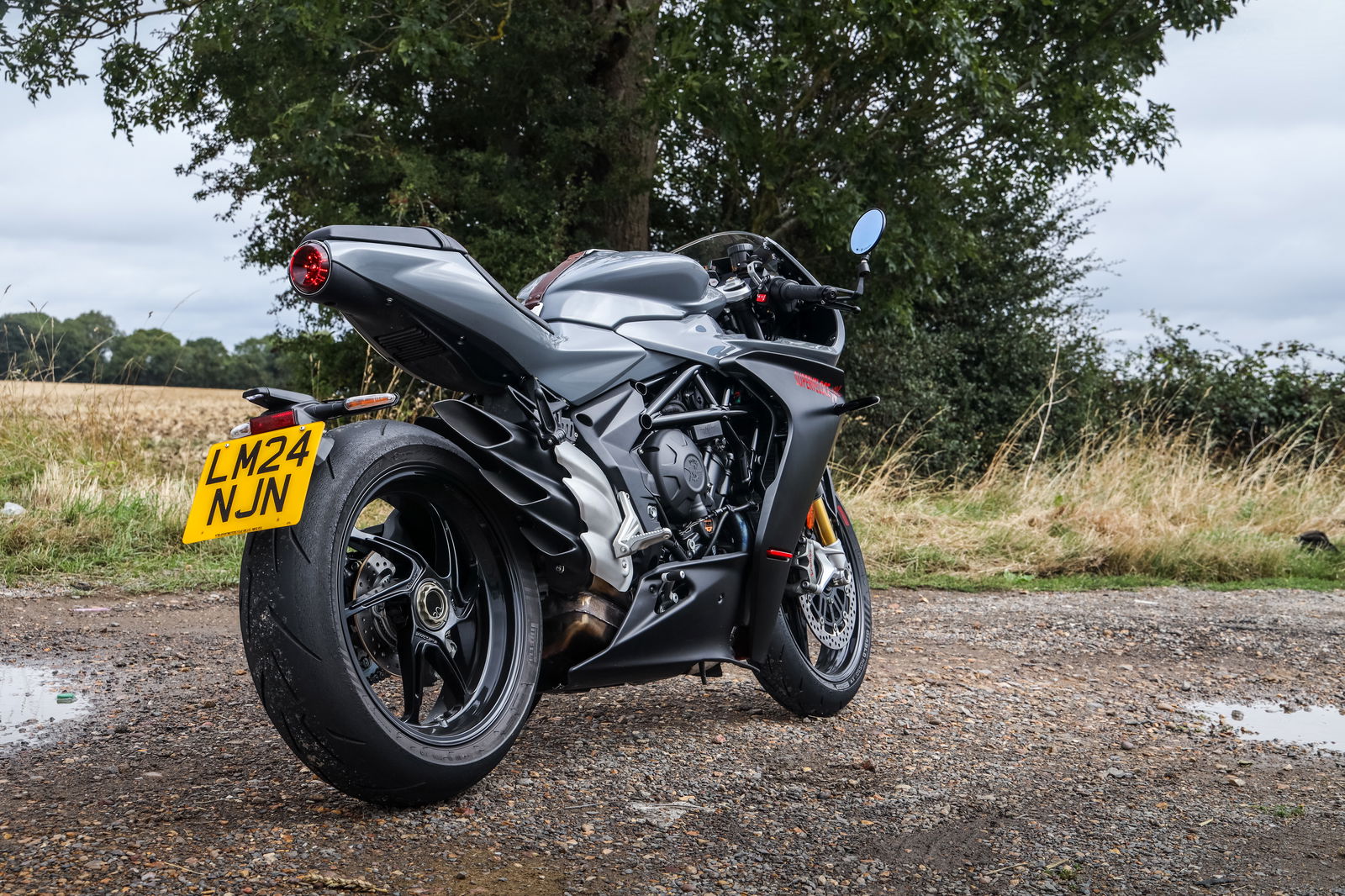
At lower revs, it’s almost agricultural, sounding more akin to heavy industrial equipment than an exquisite motorcycle engine from Italy. That’s half the charm, and as soon as you’re in the mid-range there’s a deliciously angry rasp from that naughty-looking three-into-one exhaust, accompanied by some throaty induction noise.
As for the thrilling, screaming top end, don’t expect to get up there on the road all that often, as first gear maxes out beyond 70mph, and the top end of first is…a lot more than that.
This doesn’t matter too much, though. Triples are known for combining a four-cylinder-like top-end rush with the kind of mid-range clout of a twin, and the Superveloce’s motor is no different. Yes, peak torque at 10,600rpm sounds high, especially given how fast you end up going to get to the engine spinning that quickly, but with about two-thirds of the full twist figure is being made at just 4,000rpm, this three-pot feels punchy throughout the rev range.
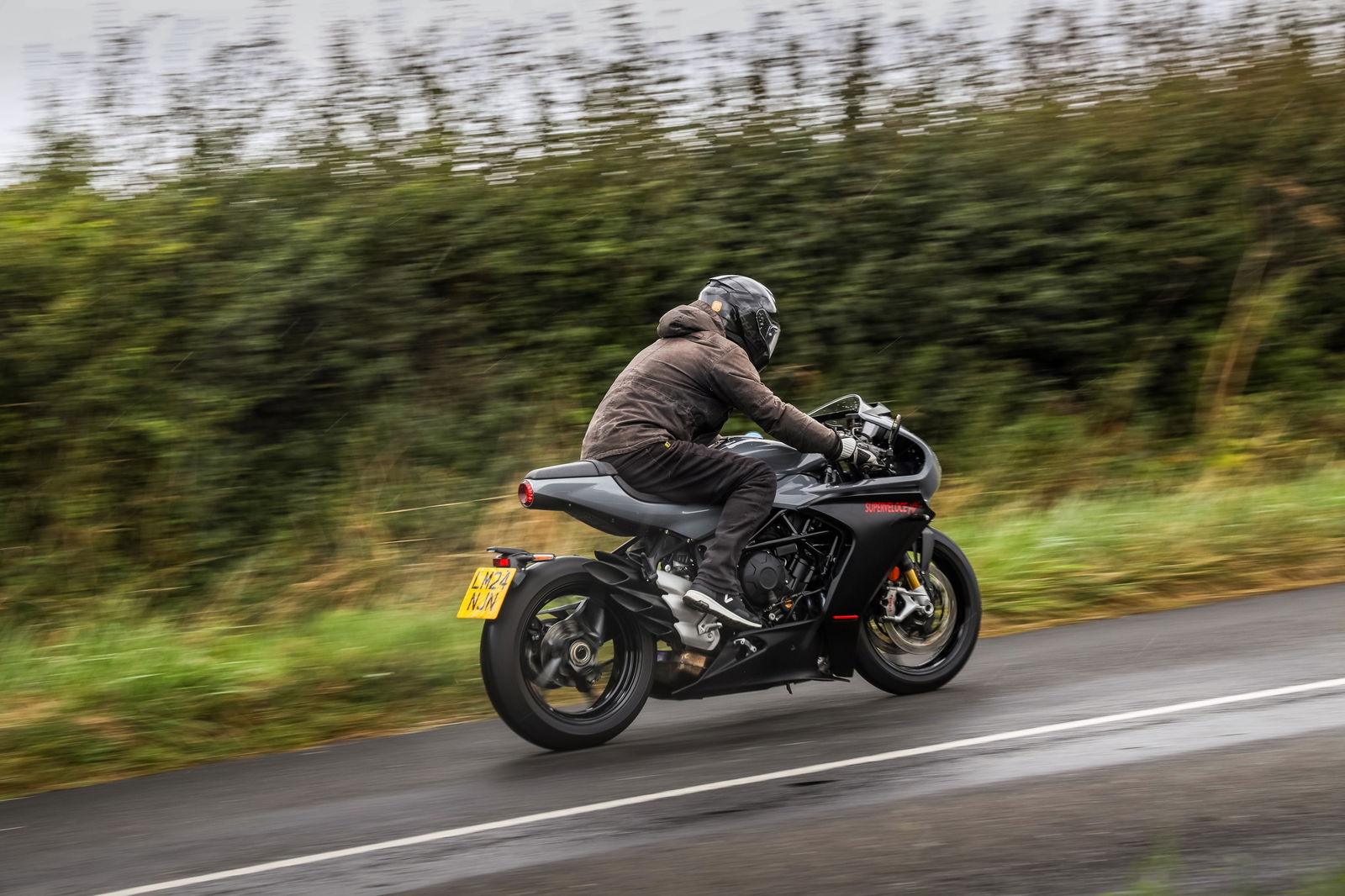
The Superveloce is definitely not a bike that requires you to work your way up and down the gearbox, although when you do want to, changing cogs is a nice experience. The transmission is a smooth-shifting one, while the slick quickshifter performed faultlessly throughout the loan.
We did see a lambda sensor error crop up a couple of times, though, which was followed by uneven running from the triple, even causing the bike to cut out on more than one occasion. After the bike was returned, technicians cleared the fault code and reported that the bike ran perfectly after that, so we can hopefully chalk that up to a one-off.
It’s a confidence-inspiring bike to ride quickly, and it doesn’t take long to feel as though the Superveloce is encouraging you to up your entry speed that little bit more, and lean over that little bit further. When you’re there, the Superveloce feels reassuringly stable, and offers plenty of feedback from its Pirelli Diablo Rosso IV Corsa tyres.
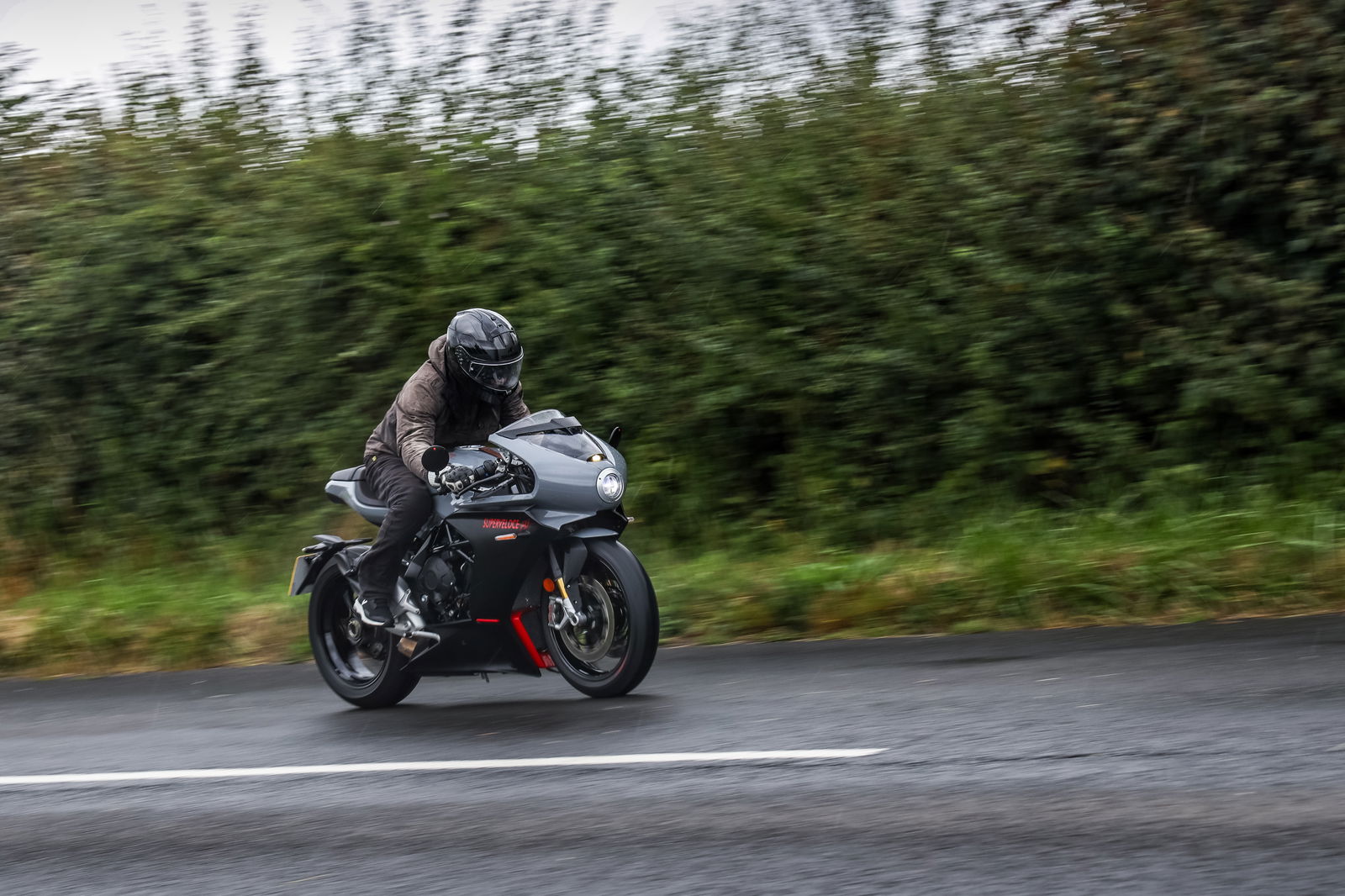
It’s hard to know how much difference that counter-rotating crank makes in terms of how keenly the bike tips in. The speed of the Superveloce’s steering isn’t exactly a standout feature, but it’s not sluggish in that regard either. It doesn’t seem hugely keen to lift the front wheel, but again, it’s hard to know how much of that is down to the crank.
The damping is definitely on the firmer side, with the fork and shock moving aggressively through their travel at low speeds. Things do settle at higher speeds, but there are definitely plusher-feeling setups out there for this kind of money, particularly from fellow Italian brand Ducati with its propensity for using fancy-pants Ohlins hardware.
Should you buy an MV Agusta Superveloce?
Even with the price cuts, the Superveloce doesn’t look like a rational purchase. For the kind of outlay we’re looking at here, particularly for the S model, you’re getting something that’s noticeably dated compared to the competition.
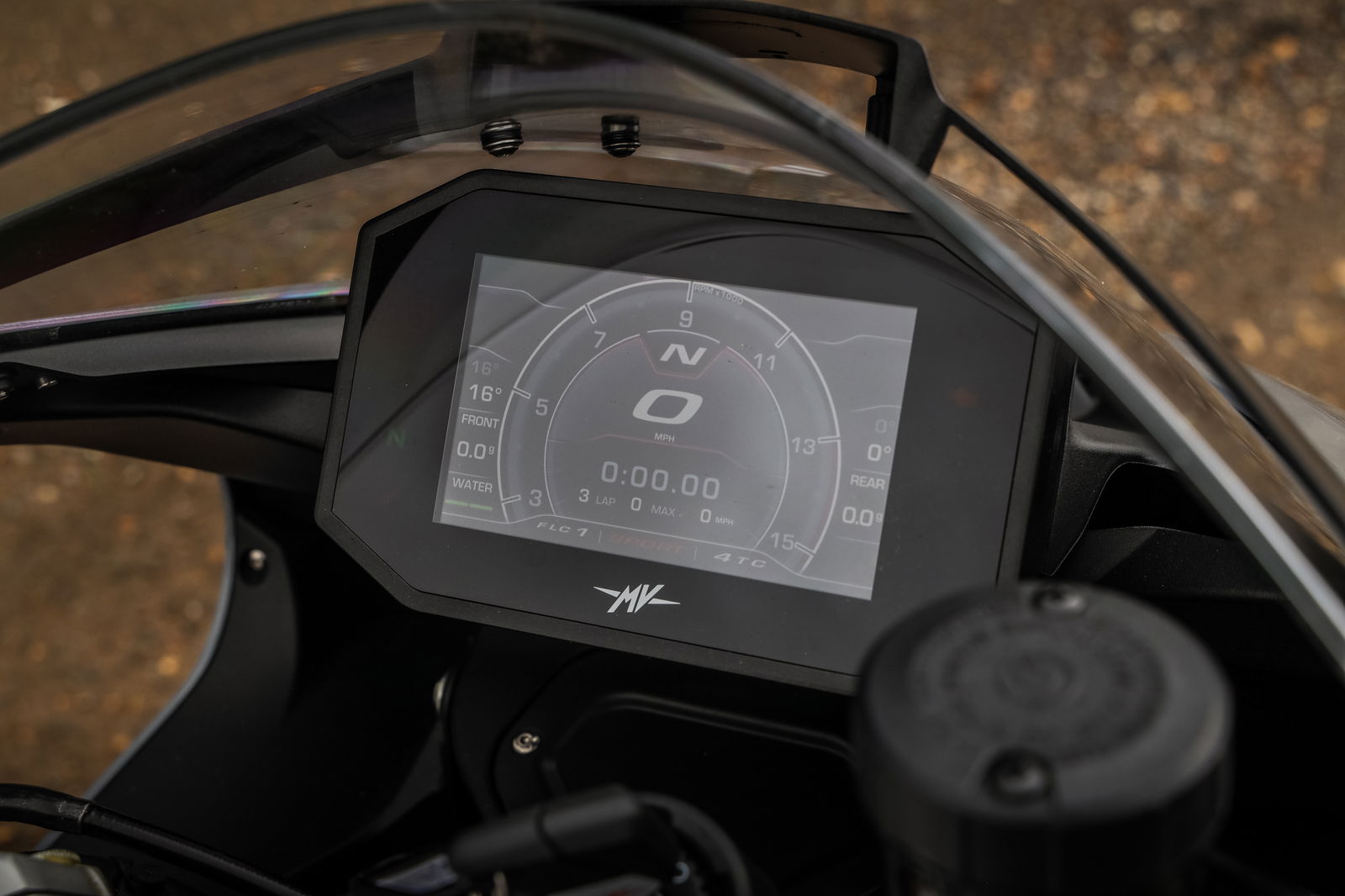
Perhaps that doesn’t matter. You’ll never feel short-changed when you turn around after a ride and gawp at it sitting pretty in your garage, and that ride will have been a memorable one thanks to that angry triple sitting under all that retro-inspired bodywork. And then there’s the badge, which has an allure all of its own. You get the sense that a lot of MV Agusta buyers, particularly the well-heeled ones, are already set on buying something from the brand. They’re unlikely to give a damn if a rival company has more technically impressive and better-value alternatives. It has to be an MV.
This is, however, changing. With Pierer Mobility taking a majority stake in MV Agusta, the brand is on the receiving end of some well-overdue investment. There are properly new and technically impressive models emerging like the Enduro Veloce, so in time, the styling and the badge on MV machines won’t need to do so much heavy lifting.
But in the meantime, we’d understand perfectly why, despite its flaws, you’d happily splurge on a Superveloce.
